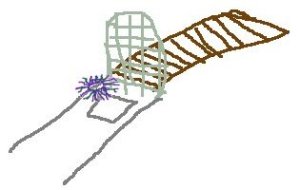 Once upon a time, humans were tribe beings. And within the culture of tribes, storytellers were key.
Once upon a time, humans were tribe beings. And within the culture of tribes, storytellers were key.
Stories allowed elders to teach the young. Stories allowed tribes to communicate; to share knowledge and learning, to explore the differences in their experience. Stories provided hope and warning of things that had yet to happen to them, because it had happened to others.
We are inherently interested in other people’s experience. Think of how many people watch documentaries or read biographies about a celebrity’s life, or about how interesting it can be to overhear a conversation.
These days, at least in England, there are no travelling bards telling their tales of other tribes. To some extent, individuals may be able to ask about the experience of grand-parents or friends of the family; but we’ve lost the story-teller in the way they used to exist.
~
Last week, two things happened. I spoke to a colleague about the importance of engaging people in a mental health campaign; about choosing words carefully and giving them ground they could connect with.
I then read this article about spelling. My attention was particularly caught by this phrase:
Are all children learning to love words from their very first years at school? Are they being fascinated by stories about where words come from and what those stories tell us about the spelling of those words?
Are they being excited by breaking the code, figuring how words are making their meanings and thrilled to find that what they’ve learned about one word helps them solve another word?
How many children would be interested in spelling if it was a spy-game, a code to break like James Bond or Lara Croft?
When we engage in an activity, aren’t we more likely to really see the connections; to “get it”?
~
When I did my degree, I really struggled with action potential.
I just couldn’t get my head around it. I’d been “taught” it for about 4 years at this point. Then I got my other half to explain it, and I drew myself a diagram. I had pacman as an “enzyme” to “eat” or “break up” the transmitters. And suddenly, I got it. I saw how it all worked.
I’d created a story.
This is transmitter. This is a tunnel (axon). But wait; there’s a gate! It has to cross the “synaptic cleft” and in it, there is a pool of pacman, who could stop this transmitter… (yes, I even drew some diagrams for myself and another student)
Essentially, I taught myself about a process that happens in every single neuron in the body, multiple times every second. By creating a story with a protagonist and an antagonist; and representing key aspects with things I already knew.
~
In a way, isn’t that what every story teller wants? To teach skills and to give hope to our readers or listeners?
You may not have gone to Hogwarts or followed Frodo to the mountain; but you know that Sam’s loyalty served him well and that having faith in your friends will keep you alive.
They’re stories about other people’s experiences; but we can learn from them just as the original tribes did from myths and legends of the place they live.

